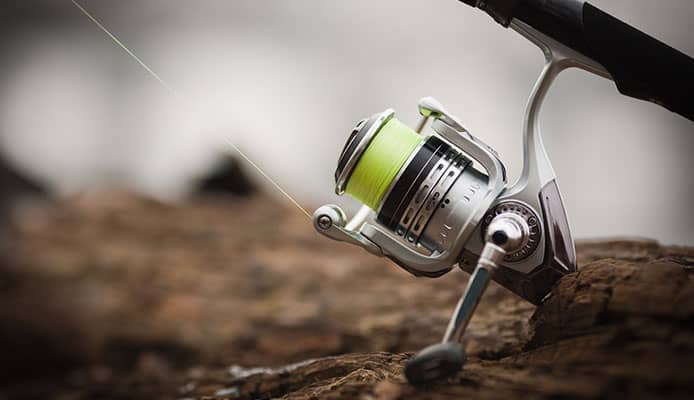
Muskys are not easy fish to catch, but this only makes their hunt all the more enjoyable. Because of this, musky fishing is getting more and more popular across the country. As the apex predator of their environment, they are the strongest and quickest fish that live in fresh water in North America. Facing them and bringing one home to show requires gear that is strong and sturdy enough to challenge them and live to tell the tale.
The best musky reels are built especially to sustain the superior forces they will be subjected to. Their form a class of their own where power and strength are measured on a different scale than normal reels. To get you up to speed with the latest and greatest options on the market, we have compiled here a list of the best reels for musky fishing you can find today. When a daunting task is at hand you need to have the best gear available at your side, and these musky fishing reels as built just for that.
OUR TOP PICK
Abu Garcia C3
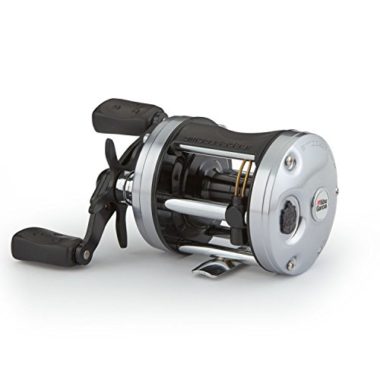
- Stand Out Features - Why We Love It
- Optimized for smooth and precise casting
- Can generate powerful torque
- Six pin centrifugal brake
Drag ratio: 15 pounds
Gear ratio: 5.3:1
Weight: 9.2 to 10.7 ounces
BEST VALUE
KastKing Royale Legend

- Stand Out Features - Why We Love It
- Very durable build yet lightweight
- Can provide huge amount of drag
- Magnetic dual brake system
Drag ratio: 17.5 pounds
Gear ratio: 7.0:1
Weight: 7.4 ounces
EDITORS CHOICE
Sougayilang Warrior
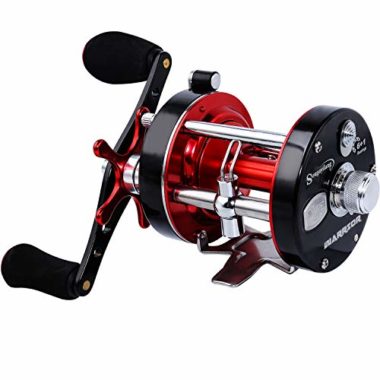
- Stand Out Features - Why We Love It
- Very powerful drag
- Well contained price
- Can also be used for trolling
Drag ratio: 17-22 pounds
Gear ratio: 5.2:1
Weight: 11.28-11.99 ounces
Shimano Calcutta 200B
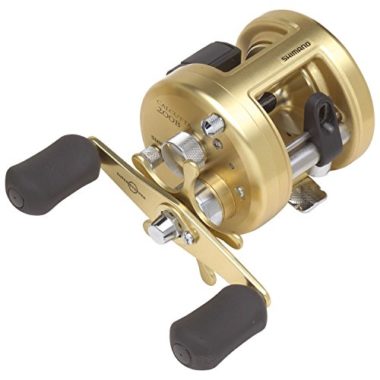
- Stand Out Features - Why We Love It
- Extremely durable frame
- Exquisite design
- Versatile and dependable
Drag ratio: 9.5-16.5 pounds
Gear ratio: 6.0:1
Weight: 11.28-11.99 ounces
Okuma Cold Water 350
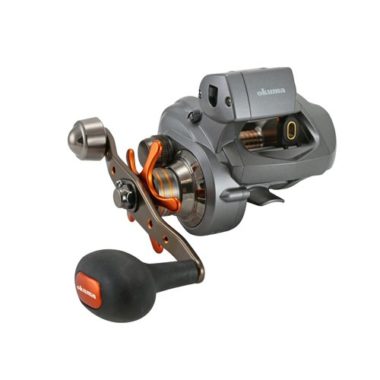
- Stand Out Features - Why We Love It
- Very smooth design, fits well in hand
- Lightweight
- Very powerful drag
Drag ratio: 25 pounds max
Gear ratio: 5.4:1
Weight: 12 ounces
Shimano Corvalus
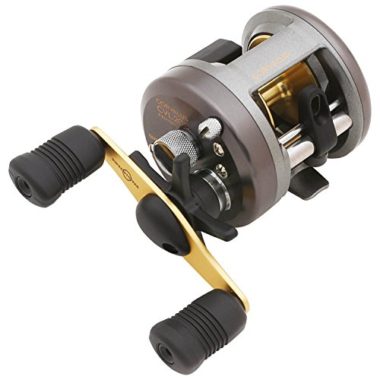
- Stand Out Features - Why We Love It
- Extra durable
- Allows for almost total control of the line
- Lightweight
Drag ratio: 11 pounds
Gear ratio: 5.2:1
Weight: 11.8 ounces
Abu Garcia Revo Toro Beast

- Stand Out Features - Why We Love It
- Very strong build and drag ratio
- Dual braking system
- Large line capacity
Drag ratio: 25 pounds
Gear ratio: 4.9:1 and 6.2:1
Weight: 13.58 ounces
Shimano Calcutta D
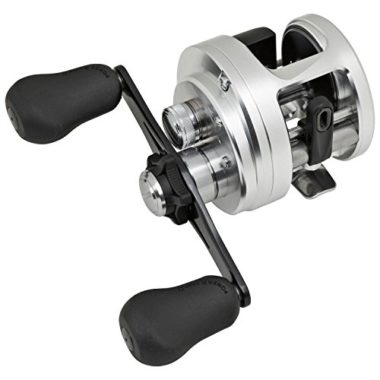
- Stand Out Features - Why We Love It
- Includes latest technologies for spooling and force
- Can be used with mono, fluorocarbon and powerpro lines
- Very tough build
Drag ratio: 11-15 pounds
Gear ratio: 5.7:1, 5.6:1 or 5.1:1
Weight: 9 to 11.8 ounces
How To Choose A Musky Reel – Buying Guide
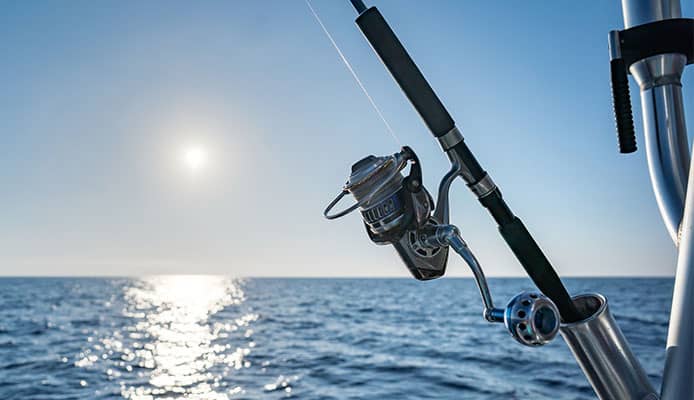
Right vs Left
Most musky reels are baitcaster reels , and this means you have to choose on which side you want to have your handle. Unlike spinning reels, in which it can easily be moved from side to side, on baitcaster reels the handle is fixed because of the way they are built. Keep in mind that your dominant hand will be the one you reel with while the non dominant one will be the one you cast with. This is crucial to remember when making your decision so you can buy a reel that best fits with your habits, since you won’t be able to change it once you have your reel
Gears & Gear Ratio
The gear ratio indicated how many times the spool rotated when you turn the reel once. This gives you an important indication of how quickly your line and musky lure will move through the water and also how much strength you will need to apply in order to get things moving. For musky fishing it is recommended not to descend under a ration of 5:1, to be able to effectively challenge the strength of the fish. The gears are usually made for very tough and high quality materials such as stainless steel or brass, so you won’t have to worry about any of them breaking.
Line Weight
The indication of line weight will tell you how much force you have to apply to it before it breaks. Depending on the size and strength of the fish you are hunting, you will have to choose a line that is up to the task. In the case of muskys, given their superior strength and speed, you need a line that is able to sustain at least 80 pounds of force. A fish in itself will not weigh as much, maybe just under 30 pounds, but if you consider the enormous force it will put on the line as it fights with you, it is easy to understand why you need a tough, thick line on your side.
Durability
The reel and its components will be exposed to all kinds of weather when you are out on the water. Furthermore, if you plan your trips on saltwater, you also need to consider corrosion. Manufacturers are, of course, aware of these issues and build their reels out of tough and durable materials such as stainless steel, brass or high grade aluminum. Selecting a reel that is built with these will allow you to have a tool you can feel comfortable to use in any situation and that will hold together even in cases of stress. It is worth investing more money in a reel that is built with quality materials rather than staying on the cheap side and having it go to waste very soon.
Type
Both spinning reels and baitcasting reels can be used to go musky fishing. Most of the ones we have presented in our musky reels reviews, however, are baitcasting reels. This is because this kind of reel offers the highest performances. Spinning reels are a favorite of beginner anglers, but when things get serious there is nothing that quite matches the baitcaster for toughness, precision and ease of use. We recommend choosing one of these if you decide to tackle prey as challenging ad the musky.
You might also be interested in:
Spinning Reel Under 50 & Baitcasting Reel Under 100
Line Capacity
Apart from selecting a tough line that can survive some hardships, you also need to make sure you have enough of it with you to sustain the fight. If the line is too short you might run out of it at the worst moment and risk losing the fish if it snaps, so it is recommended to have at least 150 yards on your spool when you head out on the river.
Bearing Material
Bearings are responsible for how smooth your casting will be, so it is crucial that they are made of high quality materials. The most common ones you can find will be made with stainless steel, which is inexpensive but still very durable. The only weakness they might show is when they are confronted with the corroding effect of salt water. This is why solid ceramic bearings have started to appear. These feature a significant live expectancy increase over stainless steel bearings, since they are less susceptible to corrosion. Their light weight also makes them a prized option, but they do come at a higher cost.
Housing, Frames, Spools
The reel’s housing, frame and spool are all crucial parts of machinery that must effectively combine to deliver the best results. The best spools are made from forged aluminum and provide fast and smooth spinning with lighter weight, while less expensive models are die-cast. Frames and housings can be made with aluminum or graphite. The former is stronger and might be preferable especially for frames since muskys tend to put a lot of strain on them. Graphite, on the other hand, is more resistant to corrosion so will naturally be a favorite of seawater anglers.
FAQs
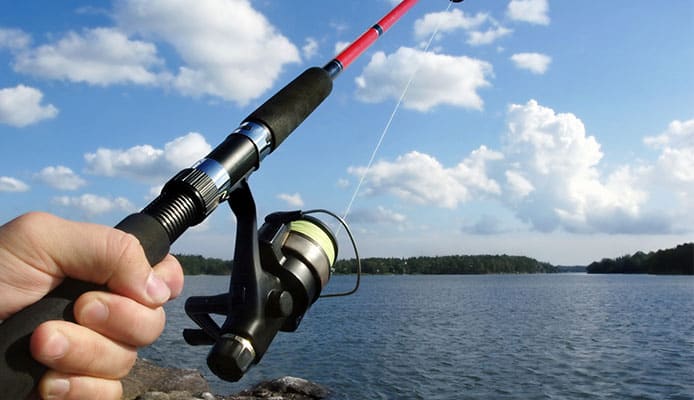
Q: What Is a Musky?
The word "musky" is an abbreviation for muskellunge, which is freshwater fish that is native to North America. The musky is the apex predator of its environment and is able to bring down prey significantly larger than itself by hunting in packs. As far as looks, the musky resembles a pickerel or a pike, and they spawn during mid to late spring in waters that are not very deep, with plenty of vegetation.
Q: How To Target A Musky?
The strategy to apply to catch a musky will change depending on the time of the year and the outside temperature. In the autumn, with temperatures usually between 50 and 60 F, you will be fine simply by looking for shallow waters. In late spring, if the temperatures grow past 50 F, it is better to search for deeper zones, going more and more deep as the temperature rises. When the weather gets very cold, you will need to aim for the deepest parts of the rivers, where you will likely find a great many preys because their metabolism slows down. As far as the best time of the day to go fishing, in spring and autumn it will be during the warmest hours, while in summer it is during dusk or dawn.
Q: Why Do I Need A Special Musky Reel?
You need a special reel to fish for musky because of the unique characteristics of this fish. They are extremely agile and strong, so you will need to have a reel that is capable of handling a tough, heavy line without tiring you excessively, a reel that will let you cast bait again and again without too much fatigue. Muskys can deliver a significant amount of pull, more than other freshwater species, so you will need a reel that can handle the load and work with you, rather than against you.
Globo Surf Overview
Tackling a muscky is not an easy task, given their strength, size and speed in the water. To bring one home you need to rely on the best gear on the market as well as your talents. The reels we have presented are all up to the task and ready to get the job done, so follow our indications and you’ll be sure to take home a quality product that will allow you to catch a prize-winning fish.
More Fishing Reels Reviews:
- Baitcaster Reels For Beginners
- Daiwa Spinning Reels
- Salmon Reels
- Reels For Stripper Fishing
- Shimano Spinning Reels
- Catfish Reels
- Underspin Reels
- Ultralight Spinning Reels
- Trout Fishing Spinning Reels
- Spinning Reel For Bass
- Surf Fishing Reels
- Crankbait Reels
- Fly Fishing Reels


